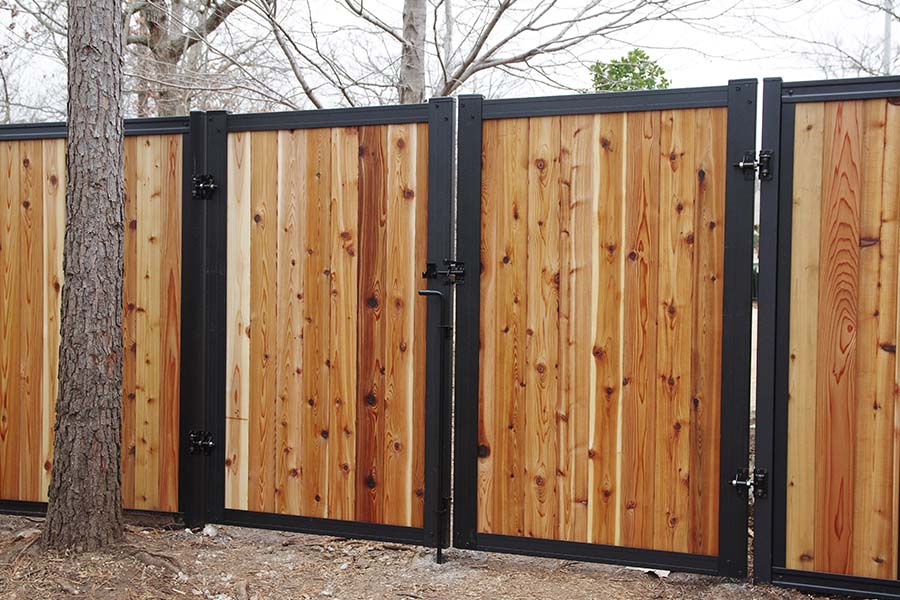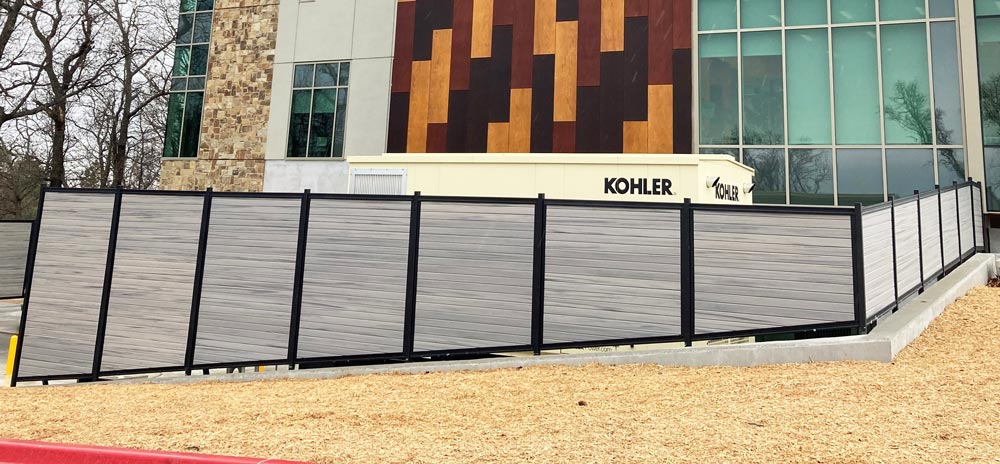Featured
Your fencing is exposed to different climate condition year-round, and while it functions as a crucial part of your property, it's likewise among one of the most at risk aspects when it concerns weather-related damage. Severe winds, heavy rainfall, severe temperatures, and UV exposure can all take a toll on your fencing's stability, resulting in tear and wear. There are a couple of actions you can take to secure your fence and prolong its lifespan. Below are some effective techniques to guard your fence from weather-related damages.
Wood Fencings: While wood is a traditional selection for secure fencing, it is at risk to bending, rot, and insect damage, particularly in areas with high moisture. Pressure-treated wood or cedar is extra durable, however normal maintenance is necessary to maintain it in excellent condition. Vinyl Secure fencing: Plastic is a superb choice for those looking for a low-maintenance and weather-resistant fence. It's unsusceptible dampness, won't warp or crack in the warmth, and resists fading from UV rays. Metal Fencing: Wrought iron and aluminum are long lasting materials for secure fencing, yet they call for a rust-resistant covering to secure them from deterioration because of wetness. A safety finishing or regular maintenance can prevent rust and prolong the life of metal fencings. Compound Fencing: Made from a mix of timber fibers and plastic, composite fencings are highly immune to weather aspects, including moisture, warmth, and UV rays. This material provides an equilibrium of durability and aesthetic appeal. Picking a material fit to your climate will certainly supply better protection for your surround the lengthy term.
Seal or Tarnish the Wood: Applying a high-quality sealant or stain to your timber fencing produces a waterproof barrier that stops dampness from going into the wood. It likewise assists secure the wood from UV rays, which can cause discoloration and drying. Reapply Sealer Frequently: With time, the safety barrier of your sealant or stain can put on down. Depending upon your climate, it's a great idea to reapply each to 2 years to keep the timber shielded. This therapy will certainly preserve the fencing's look, protect against rot, and prolong its life expectancy.
![]()
For additional protection, take into consideration making use of wind-resistant mesh displays or panels in areas where wind is a considerable issue. This extra layer can aid reduce the force that the wind puts in on your fence.
Examine Drainage: Make sure that the ground around your fence inclines away from the blog posts. Correct drain allows water to stream far from the fencing, avoiding dampness accumulation. Set Up Water Drainage Solutions: In areas where water drainage is a concern, think about including a French drain or crushed rock around the base of your fencing posts to redirect water far from the structure. Good drain can protect against rot, rust, and other kinds of weather-related damage.
![]()
![]()
Concrete Grounds: Set fence blog posts in concrete to avoid them from loosening in time because of dirt disintegration or moving ground. Metal Dental Braces: Including steel dental braces to fencing articles can give added stamina and reduce the risk of leaning or breaking. Reinforcing your messages makes sure that your fence will remain in location, even throughout serious weather.
For wood fencings, gently clean the surface area with a light cleaning agent to eliminate dust and gunk. For vinyl fencings, make use of a soft fabric and cleaning remedy to stop buildup. For steel fences, inspect for rust and sand it off before applying a fresh layer of paint. Conclusion. Your fencing is a crucial attribute of your property, and with the best care, it can hold up against the obstacles postured by the climate. By selecting sturdy products, carrying out routine upkeep, and reinforcing weak factors, you can secure your fence from the elements and extend its life. Normal assessments, applying protective coatings, and taking actions to regulate moisture and wind direct exposure will certainly help make certain that your fencing stays solid, functional, and appealing for several years to come.
- Select Weather-Resistant Products. The products you choose for your fencing can have a significant influence on its capacity to endure the aspects. Different materials are better outfitted to manage particular climate condition. Below's a malfunction of how numerous products hold up against the weather condition:
Wood Fencings: While wood is a traditional selection for secure fencing, it is at risk to bending, rot, and insect damage, particularly in areas with high moisture. Pressure-treated wood or cedar is extra durable, however normal maintenance is necessary to maintain it in excellent condition. Vinyl Secure fencing: Plastic is a superb choice for those looking for a low-maintenance and weather-resistant fence. It's unsusceptible dampness, won't warp or crack in the warmth, and resists fading from UV rays. Metal Fencing: Wrought iron and aluminum are long lasting materials for secure fencing, yet they call for a rust-resistant covering to secure them from deterioration because of wetness. A safety finishing or regular maintenance can prevent rust and prolong the life of metal fencings. Compound Fencing: Made from a mix of timber fibers and plastic, composite fencings are highly immune to weather aspects, including moisture, warmth, and UV rays. This material provides an equilibrium of durability and aesthetic appeal. Picking a material fit to your climate will certainly supply better protection for your surround the lengthy term.
- Frequently Treat Wooden Fences. If you have a wood fencing, shielding it from temperature, moisture, and sunlight variations is essential. Wood can take in wetness from snow, rain, or humidity, causing it to rot and degrade. Here's just how you can safeguard wooden fencings:
Seal or Tarnish the Wood: Applying a high-quality sealant or stain to your timber fencing produces a waterproof barrier that stops dampness from going into the wood. It likewise assists secure the wood from UV rays, which can cause discoloration and drying. Reapply Sealer Frequently: With time, the safety barrier of your sealant or stain can put on down. Depending upon your climate, it's a great idea to reapply each to 2 years to keep the timber shielded. This therapy will certainly preserve the fencing's look, protect against rot, and prolong its life expectancy.

- Set up Windbreaks. Strong winds can trigger considerable damage to fencings, particularly those made of light-weight products or tall frameworks. These natural obstacles can assist deflect wind, avoiding direct gusts from harming your fence.
For additional protection, take into consideration making use of wind-resistant mesh displays or panels in areas where wind is a considerable issue. This extra layer can aid reduce the force that the wind puts in on your fence.
- Ensure Appropriate Water Drainage Around Your Fencing. Standing water is among the leading causes of fence damage, especially for wood fences. Water can deteriorate the fence messages, creating them to rot and wear away more promptly. To avoid this:
Examine Drainage: Make sure that the ground around your fence inclines away from the blog posts. Correct drain allows water to stream far from the fencing, avoiding dampness accumulation. Set Up Water Drainage Solutions: In areas where water drainage is a concern, think about including a French drain or crushed rock around the base of your fencing posts to redirect water far from the structure. Good drain can protect against rot, rust, and other kinds of weather-related damage.

- Trim Overhanging Branches and Vines. Trees and plants near your fence might look like an attractive enhancement, yet they can present dangers when left unattended. Looming tree branches and vines can cause damage to your fencing throughout storms or high winds. Furthermore, creeping plants can trap wetness versus wooden fencings, speeding up the decaying procedure. To safeguard your fencing, cut any branches or plants that hang over or near the fence on a regular basis. This will certainly decrease the possibility of dropping particles and avoid wetness buildup.
- Enhance Fencing Posts. The security of your fencing mostly relies on the condition of the articles. Fencing blog posts are vulnerable to shifting, leaning, and rotting, particularly during periods of extreme weather condition. It's crucial to enhance the blog posts to preserve stability if your fencing is in a location that ices up or experiences high winds throughout winter months. Some methods to enhance your fence blog posts include:

Concrete Grounds: Set fence blog posts in concrete to avoid them from loosening in time because of dirt disintegration or moving ground. Metal Dental Braces: Including steel dental braces to fencing articles can give added stamina and reduce the risk of leaning or breaking. Reinforcing your messages makes sure that your fence will remain in location, even throughout serious weather.
- Normal Examinations and Maintenance. Routine evaluations are crucial for determining very early indications of weather-related damage. Check your fencing after tornados or heavy rainfall to look for concerns such as loosened boards, sagging articles, or rusted areas. Early detection of small problems can save you from expensive repair services later. Additionally, cleansing your fence regularly helps keep its problem. As an example:
For wood fencings, gently clean the surface area with a light cleaning agent to eliminate dust and gunk. For vinyl fencings, make use of a soft fabric and cleaning remedy to stop buildup. For steel fences, inspect for rust and sand it off before applying a fresh layer of paint. Conclusion. Your fencing is a crucial attribute of your property, and with the best care, it can hold up against the obstacles postured by the climate. By selecting sturdy products, carrying out routine upkeep, and reinforcing weak factors, you can secure your fence from the elements and extend its life. Normal assessments, applying protective coatings, and taking actions to regulate moisture and wind direct exposure will certainly help make certain that your fencing stays solid, functional, and appealing for several years to come.
Latest Posts
Uncover Oil Changes & More: Complete Auto Care Solutions from Montclare Auto Repair
Published en
1 min read
Join Your Financial Partner at WyHy – Key Advantages for Your Money Goals
Published en
1 min read
Discover WyHy FCU – Financial Freedom for Your Success
Published en
1 min read
More
Latest Posts
Uncover Oil Changes & More: Complete Auto Care Solutions from Montclare Auto Repair
Published May 24, 25
1 min read
Join Your Financial Partner at WyHy – Key Advantages for Your Money Goals
Published May 23, 25
1 min read
Discover WyHy FCU – Financial Freedom for Your Success
Published May 23, 25
1 min read